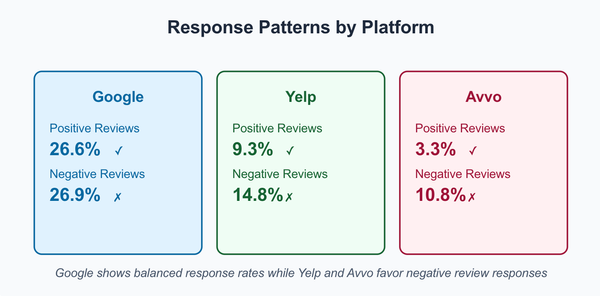Medical Malpractice Claims in USA and Laws Revolving Around It

Medical malpractice is something that nobody expects to encounter, but unfortunately, it’s more common than many realize. Medical malpractice is the wrongful actions of a professional that occurs when a doctor, nurse, or other medical staff fails or denies to provide the expected standard of care, and as a result, a patient is harmed.
Understanding medical malpractice claims and the laws surrounding them is crucial if you or a loved one has experienced harm due to a healthcare professional’s negligence or mistake. This comprehensive guide will break it all down so you can better understand how these claims work, what laws protect you, and what steps to take if you find yourself in such a situation. Let’s dive into it!
Common Examples of Medical Malpractice
Medical malpractice can take many forms, from simple to more serious and complex errors. In some cases, the harm caused may be immediately obvious, while in others, the effects might not surface until much later. Here are some of the most common examples:
- Misdiagnosis or Delayed Diagnosis: If a doctor fails to diagnose a condition correctly or within a reasonable timeframe, leading to worsened health or unnecessary harm.
- Surgical Errors: Errors made during surgery are also considered medical malpractices. These may include errors like operating on the wrong site, damaging organs, or leaving surgical instruments inside the patient.
- Medication Errors: Prescribing the wrong medication or dosage which can lead to harmful side effects or worsened conditions.
- Childbirth Injuries: If mistakes are made during childbirth, such as improper use of forceps, delayed C-section, or failure to monitor the baby’s vital signs, it can lead to serious injuries for both the mother and child.
- Anesthesia Errors: Administering the wrong amount of anesthesia or failing to monitor a patient’s response can result in brain damage, coma, or even death.
- Failure to Warn of Risks: If a healthcare provider fails to inform you of the risks associated with a procedure or treatment, and you suffer as a result, this could be considered malpractice.
History of Medical Malpractice Laws and Compensation Trends
The history of medical malpractice in the United States has evolved significantly over time, shaped by legal, societal, and medical developments. Here's an overview of its progression:
1. Early History (Pre-19th Century)
The history of medical malpractice dates back to Roman law, which recognized it as wrong. After the Norman Conquest in 1066, English common law developed, and by the late 12th century, records in the Court of Common Law and Plea Rolls began documenting medical malpractice cases. One early case involved a servant who became more ill after treatment, and both the servant and his master were allowed to sue the doctor.
2. The 19th Century: The Birth of Modern Medical Malpractice
During the 1800s, medical malpractice began to take a more recognizable form. Physicians began to hold higher status, and a shift occurred from general practitioners to specialists. As the public’s trust in medical professionals grew, so did expectations regarding the quality of care.
In the mid-1800s, the legal framework for medical malpractice began to evolve. However, the notion of informed consent—where patients must be made aware of the risks before treatment—was not yet standard.
3. Early 20th Century: Formalization and Expansion
By the early 1900s, medical malpractice laws started to become more standardized. Legal decisions began to clarify when a medical professional could be deemed negligent, and legal precedents began to emerge. In the 1930s and 1940s, medical malpractice litigation increased, with more claims being filed in courts. However, liability was still often limited, and proving negligence could be difficult.
4. Mid-20th Century: Legal Reforms and the Rise of Medical Malpractice Claims
By the 1950s and 1960s, medical malpractice litigation became more common, in part due to the increasing complexity of healthcare. Medical insurance became widespread, which led to more people filing malpractice claims when they felt they were wronged. In 1969, the Harvard Medical Practice Study revealed that 3.7% of hospitalizations and 27.6% of adverse events could be prevented and happen due to negligence. This highlighted the need for better legal protections for patients.
5. 1970s–1980s: The Rise of Malpractice Insurance
The 1970s and 1980s saw a rise in the number of malpractice claims, and the costs of malpractice insurance for healthcare providers began to increase significantly. In response to rising claims and insurance costs, many states enacted tort reform laws to limit damage awards and legal fees, thus making it more difficult for patients to sue for malpractice.
6. 1990s–Early 2000s: Growing Public Awareness and Reform
By the late 1990s and early 2000s, the conversation about medical malpractice became a part of national discourse as high-profile cases and media coverage brought attention to the issue. The 2000s saw a push for broader reforms, including efforts to limit damages and make medical malpractice insurance more affordable for physicians. This era also witnessed the establishment of patient safety programs in hospitals, focusing on reducing preventable medical errors
Modern Rules and Regulations for Medical Malpractice Claims in USA

In the USA, medical malpractice compensation cases come under state-governing personal injury laws, not the federal government. These laws may vary by state, but there is a common set of rules and regulations a plaintiff must follow to prove or win a medical malpractice claim in the USA.
a. Proving negligence
To file a successful medical malpractice lawsuit, the plaintiff must prove that the healthcare providers were obligated to provide a certain degree of treatment but failed to meet the standard of care. The victims also have to prove that the breach directly caused the injury or measurable harm.
b. Statute of Limitations
Each state has a statute of limitations, which sets a time limit within which a medical malpractice lawsuit must be filed. This period typically ranges from one to three years from the date of the incident. Still, it can vary depending on the state and the case's specifics (e.g., the discovery rule, which starts the clock when the injury is discovered). The Victim must fill the claim in the required statute of limitation, or the case may not be considered legal.
c. Expert Testimony
In most medical malpractice cases, expert testimony from a legal professional is required to establish the standard of care and prove that the healthcare provider’s actions fell short. This testimony is provided by medical professionals (in the relevant field) and acts as vital evidence to proceed with the case.
d. Tort Reform
Several states have enacted tort reform laws to limit certain aspects of medical malpractice claims, such as capping non-economic damages (e.g., pain and suffering) and limiting attorney fees. These reforms aim to reduce the cost of malpractice insurance for healthcare providers and prevent frivolous lawsuits.
e. Defenses in Medical Malpractice Cases
Healthcare providers may defend themselves by arguing that:
- They met the standard of care.
- The injury was caused by the patient’s pre-existing condition or other factors unrelated to their treatment.
- The patient was partially or fully responsible for their own harm (comparative negligence).
f. No-Fault Systems
Some states, such as New York, have no-fault systems for specific medical conditions (e.g., birth injuries), where patients can receive compensation in medical malpractice cases without proving fault. However, these systems are limited in scope and do not cover all malpractice claims.
g. Contingency Fees
Personal injury lawyers often work on a contingency fee basis. It means you only have to pay them if the case results in a settlement. This allows victims to pursue justice without upfront costs. The average contingency fee for medical malpractice lawyers in the USA is 25-40% of the final claim payout.
h. Alternative dispute resolution (ADR)
One key development in recent years is the push for alternative dispute resolution (ADR). These rules focus on mediation and arbitration to resolve medical malpractice claims more efficiently and reduce court backlogs.
i. National Practitioner Data Bank (NPDB)
The NPDB is a database that details malpractice payments in the US. Hospitals use the NPDB to evaluate privilege applications and for current staff.
What Damages Can Be Recovered in a Medical Malpractice Claim?
In a medical malpractice claim, the damages a patient can recover depend on the extent of their injury and the case's specifics. The goal of these claims is to compensate the patient for both financial losses and non-financial harm caused by the malpractice. Here are the types of damages typically covered:
1. Economic Damages
These damages can be measured and are intended to compensate for tangible losses, such as:
- Medical expenses: Past and future medical bills, including hospital stays, surgeries, medications, therapy, and other necessary treatments.
- Lost wages: Compensation in medical malpractices for income lost due to the injury, as well as future earnings if the injury impacts the patient’s ability to work.
- Out-of-pocket expenses: Costs incurred for medical devices, home healthcare, travel for medical appointments, and other related expenses.
2. Non-Economic Damages
Damages are not always related to money in personal injury cases. Sometimes, the plaintiff suffers from inner pain that cannot be counted. Non-economic payouts are in place to cover losses due to intangible harm, such as:
- Pain and suffering: You can get compensation for all the physical pain, mental stress, emotional breakdowns, and anguish caused by the injury.
- Loss of consortium: Damages awarded to a spouse or family member for the loss of companionship, affection, or support due to the patient's injury.
- Loss of enjoyment of life: Compensation for the reduced ability to engage in activities the patient once enjoyed, such as hobbies, travel, or socializing.
3. Punitive Damages
In some cases, if the healthcare provider’s actions were particularly egregious or malicious (e.g., intentional harm or gross negligence), the defendant may have to pay punitive damages. These are designed to punish the at-fault party and stop similar future behavior rather than compensate the victim.
4. Future Damages
If the injury caused by medical malpractice has long-term effects, the patient may be entitled to compensation for future losses, including:
- Future medical costs: Ongoing medical treatments, rehabilitation, and future surgeries.
- Future lost wages: Long-term or permanent loss of earning capacity due to the injury.
5. Rehabilitation and Long-Term Care Costs
For serious injuries, a patient may require ongoing rehabilitation or long-term care. These costs, including physical therapy, home healthcare, and assisted living, can be part of the damages awarded.
6. Disfigurement or Permanent Disability
If the injury results in permanent disfigurement or disability, compensation may be awarded for the emotional and psychological impact in addition to the physical effects.
7. Wrongful Death
In tragic cases where medical malpractice leads to the victim’s death, the surviving family members or legal heirs can file a wrongful death claim. The damages awarded in these claims are designed to cover funeral & burial expenses, loss of financial support, loss of companionship & emotional support, loss of services, medical expenses, and other damages.
How Do You Prove Negligence? Elements of a Medical Malpractice Claim

When it comes to medical malpractice claims, simply stating that a healthcare professional’s actions have harmed you isn’t enough. For your claim to hold up in court, you need to prove certain essential elements. These elements help establish that the healthcare provider’s actions—or lack thereof—directly resulted in your injury or harm. Here are the key elements the victim must prove in a medical malpractice claim.
Doctor-Patient Relationship
There must be an established doctor-patient relationship, meaning the healthcare provider agreed to treat you, and you agreed to be treated by them. This relationship is the foundation of any malpractice claim.
Breach of Duty
Doctors and healthcare providers are expected to adhere to a certain standard of care. A breach of duty occurs when a healthcare provider’s actions fall below this accepted standard of care. For instance, if a surgeon operates on the wrong part of the body, that’s a clear breach of their duty to perform surgery correctly.
Causation
Next, there must be a direct link between the healthcare provider’s breach of duty and the harm you suffered. It’s not enough to show that a mistake was made; it must be shown that the mistake caused the injury or worsened your condition.
Injury or Harm
Lastly, to have a legitimate malpractice claim, you must prove the harm. This harm can be physical, emotional, or financial. If the mistake didn’t cause any damage or injury, it’s not considered malpractice.
Average Medical Malpractice Claim Statistics in USA: What to Expect?
When it comes to medical malpractice claims, the amount of compensation you could receive depends on various factors. While it’s difficult to pinpoint an exact figure for every case, here are some average USA medical malpractice statistics to help you get an idea of what to expect:
Compensation Rate:
Only 1 in 3 patients receive compensation for their injuries due to medical malpractice. Also, plaintiffs who hire professional medical malpractice lawyers receive 3X higher payouts than victims who work alone.
Medical Errors and Deaths
Medical malpractice is the third largest cause of death in the USA, contributing to 9.5% of total casualties, which amounts to 250,000 deaths annually. The compensation amount for wrongful death can go into multi-million figures.
Common Medical Malpractices Causes and Average Payouts
Medical malpractice compensation amount can vary largely based on a lot of factors. From 2010 to 2019, $42 billion was paid to medical malpractice victims in the USA. The average payout for no-error medical claims in the USA is $326,009, and $765,486 for cases with errors from medical teams.
- Failure to diagnose: 31.1% of claims result in an average payout of $250,000 to $750,000
- Surgery-related claims: 28.7% of claims result in an average payout of $132,915
- Improper treatment: 34.1% of claims result in an average payout of $250,000 to $500,000
- Adverse drug events: 6.1% of claims result in an average payout of over $300,000.
Medical Malpractice Cases Filed
On average, 85,000 malpractice cases are filed each year in the U.S., and there were $19.5 billion in costs due to medical errors in 2008, with 87% of this ($17 billion) related to additional medical costs.
States with the Highest Medical Malpractice Payout
- New York: $6.9 billion
- Pennsylvania: $3.6 billion
- Florida: $2.4 billion
- New Jersey: $2.3 billion
- California: $2.2 billion
Payout Trends
- Smaller payouts (less than $50,000) have decreased by nearly 55% since 2001.
- Average payouts are around $242,000 and have remained stable over the years.
- Payouts for obstetrics-related cases are the highest, around $880,000 to multimillion amounts.
Settlements vs Trials
95% of medical malpractice cases are settled out of court, with only 7% going to trial. From all the cases, 80% of trials rule in favor of healthcare providers, while only 20% award the victim.
What to Do Next? The Process of Filing a Medical Malpractice Lawsuit

Filing a medical malpractice claim is a multi-step process that requires careful planning and attention to detail. The US laws strongly protect the victim’s rights and ensure that you get fairly compensated to cover your losses. Here's an overview of the legal pathway to file a medical malpractice claim:
1. Consult an Experienced Medical Malpractice Lawyer
The first step is to speak with an experienced medical malpractice or personal injury attorney. This is crucial because medical malpractice cases can be complicated and require a deep understanding of both medical and legal matters. Your lawyer will review the details of your case, assess its merits, and determine whether you have a strong claim.
Having trouble finding the ideal medical malpractice lawyer for your case? Check out this Lawyers Map and get all the essential information about legal professionals in your area.
2. Gather Medical Records and Evidence
Once you’ve decided to proceed, your attorney will work with you to gather all relevant medical records and evidence. This may include doctor’s notes, test results, surgical records, and other documentation that shows the standard of care wasn’t followed.
3. Expert Medical Testimony
Medical malpractice claims typically require expert testimony. An expert medical witness will review your case and provide an opinion on whether the healthcare provider’s actions fell below the standard of care. You can find the best medical malpractice testimony expert in the USA on listening sites like American Medical Forensic Specialists (AMFS) or JurisPros directory.
4. Filing the Claim
If the attorney believes you have a case, they will file the claim with the appropriate court. Medical malpractice claims must be filed within a certain time period, known as the statute of limitations. This period varies by state, but it’s typically between one and three years from the date of the injury or when the injury was discovered.
5. Negotiation or Trial
Once the claim is filed, negotiations will likely be made with the defendant’s insurance company. Many medical malpractice cases are settled out of court. However, if a settlement cannot be reached, your case will go to trial, where a judge or jury will decide the outcome.
Preventing Medical Malpractice: What You Can Do?

While you may not be able to prevent every medical mistake, there are steps you can take to reduce your risk of becoming a victim of medical malpractice:
- Be an active participant in your healthcare. Ask questions, seek second opinions, and ensure that you fully understand your treatment options.
- Keep records. Document your medical history, treatments, and medications, and keep copies of all relevant documents.
- Be honest with your healthcare provider. Provide accurate and complete information about your symptoms, medical history, and medications.
- Follow instructions carefully. Whether it’s taking medication as prescribed or following post-surgery guidelines, it’s important to follow your healthcare provider’s instructions.
Wrapping it Up!
Medical malpractice claims are serious and can be life-changing. If you believe you’ve been a victim of malpractice, it’s important to understand your rights and the legal process involved. Consulting with an experienced medical malpractice attorney will help guide you through the process and give you the best chance of securing compensation for your injuries.
By understanding the laws surrounding medical malpractice, you can take the necessary steps to protect yourself and get the justice you deserve. Sign up for Lawyersrating.FYI now to get connected with world-class attorneys in your area.





